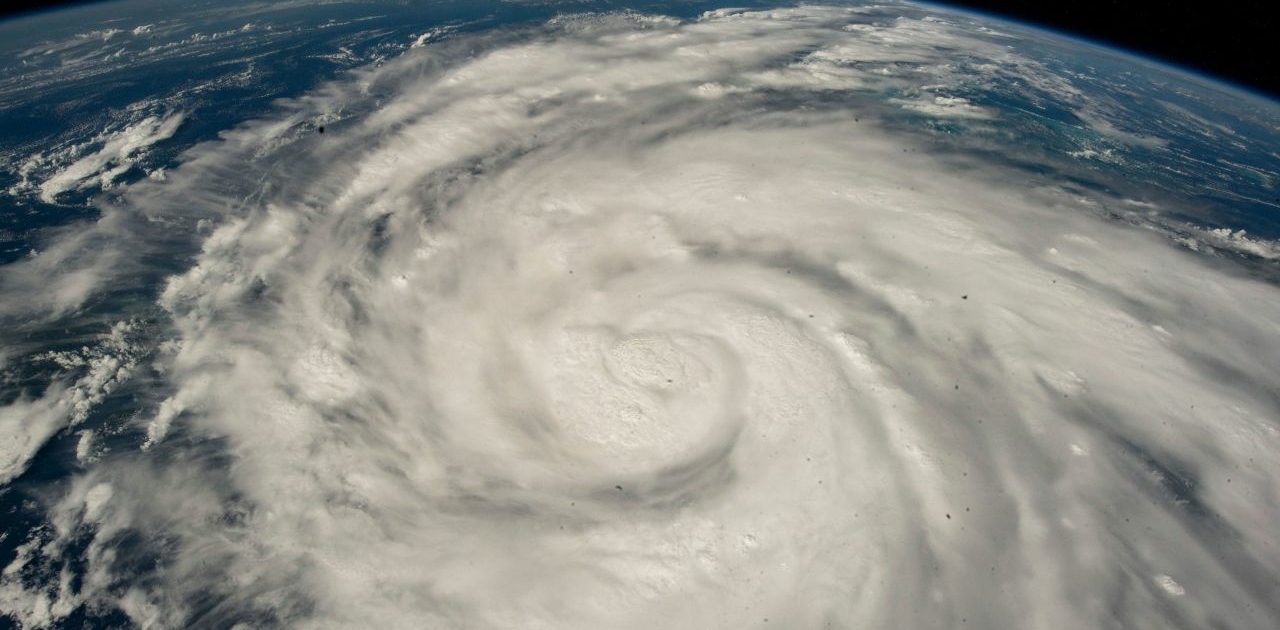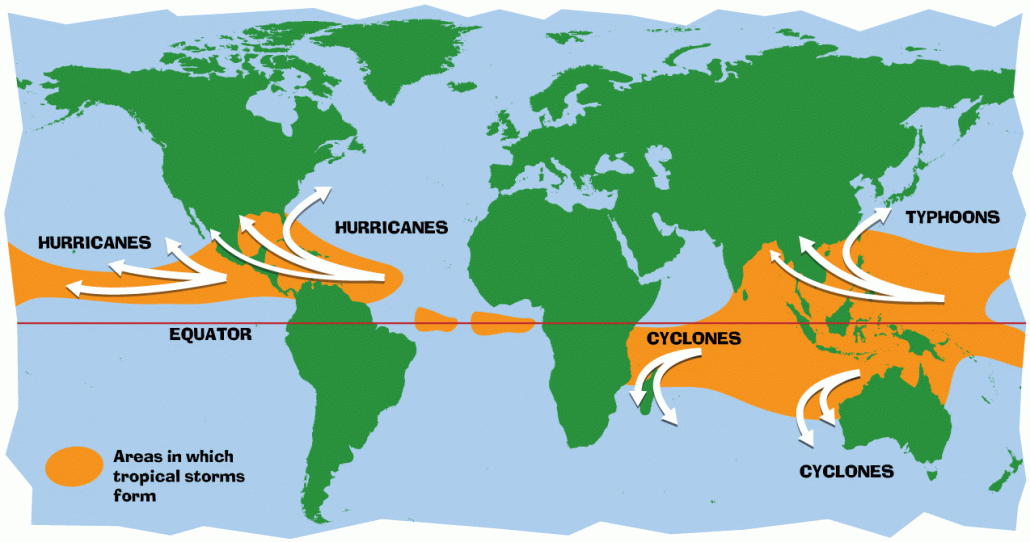Home > Geotopics > What affects tropical cyclone intensity?
What affects tropical cyclone intensity?
Tropical Cyclones and Global Atmospheric Circulation
The map below illustrates the global distribution of tropical cyclones and the different names they are known by in various regions. Tropical cyclones originate in the tropics, a few degrees north and south of the Equator.
Tropical cyclones require warm water to form, explaining their distribution in tropical regions. They also need the Coriolis effect to induce rotation, which is why they are not found directly along the Equator where the Coriolis effect is negligible. The Coriolis effect starts to be significant around 5° latitude north and south of the Equator. Additional factors necessary for tropical cyclone formation include:
- High Humidity: The atmosphere must contain a lot of moisture.
- Rapid Cooling: Rising air must condense quickly to generate the vast amounts of energy needed to power a tropical cyclone.
- Low Wind Shear: Consistent wind direction through the atmosphere is necessary; different wind directions can disrupt cyclone formation.
- Pre-Existing Low-Pressure Disturbances: Tropical cyclones often form when smaller storms merge.
The Influence of the ITCZ
These additional trigger factors are most likely to occur together in the Intertropical Convergence Zone (ITCZ). This area is characterised by permanently low pressure due to the global atmospheric circulation. The ITCZ is a band of thunderstorms encircling the Equator, forming as part of the Hadley Cell, where intense solar radiation pushes warm, moist air upwards. The constant thunderstorms, prevailing strong westerly winds, and warm, moist air make the ITCZ a primary source area for tropical cyclones.
Factors Affecting Tropical Cyclone Intensity
Tropical cyclones are powered by the heat energy released when warm, moist air condenses. This process generates immense amounts of energy—around 600 trillion watts. Most of this energy is used to push air into the upper atmosphere, with only a small fraction (about 3%) driving the cyclone’s strong winds and forward movement. The latent heat of condensation means that warmer water increases the intensity (power) of the tropical cyclone, making it more powerful.
Dissipation of Tropical Cyclones
Dissipation refers to the process of a tropical cyclone losing energy and decreasing in intensity. This can occur for three main reasons:
- Landfall: When a tropical cyclone reaches land, it loses its primary fuel source—warm water—resulting in a loss of energy.
- Cold Water: Movement into areas with sea surface temperatures below 26.5°C can cause the cyclone to weaken.
- Interference from Other Weather Systems: Encountering other weather systems with winds blowing in different directions can disrupt the cyclone’s structure.
Tropical cyclones require uniform wind direction throughout the atmosphere’s layers to maintain their intensity. If winds begin to blow in different directions at different levels, the cyclone can be torn apart.
If a tropical cyclone makes landfall on an island, it may begin to dissipate. However, if its track takes it back over warm water, it can re-intensify as it regains its energy source. Typically, it takes a few days for a tropical cyclone to fully dissipate into a regular low-pressure weather system. However, if the cyclone passes over mountainous areas, it will weaken much more rapidly. This rapid weakening can result in significant rainfall, leading to floods and landslides.
Related Topics
Use the images below to explore related GeoTopics.




